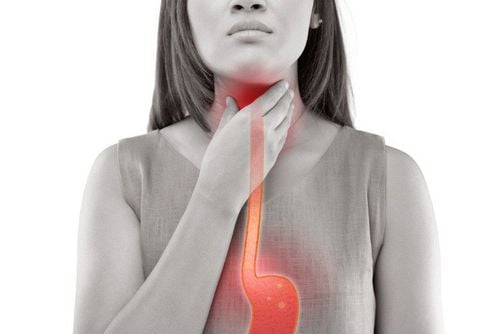This is an automatically translated article.
The article is professionally consulted by Master, Doctor Nguyen Ngoc Thang - Gastroenterologist - General Surgery Department - Vinmec Danang International General Hospital.A diaphragmatic hernia is a displacement of the upper stomach above the diaphragm – the dome-shaped muscle that separates the two thoracic and abdominal cavities. This means that part of the stomach is abnormally protruding and into the thoracic cavity. Most cases of diaphragmatic hernia are mild and asymptomatic, but in severe cases, diaphragmatic hernias can be uncomfortable, painful, and can lead to reflux.
1. What is a diaphragmatic hernia?
Diaphragmatic hernia can be congenital or acquired. Congenital diaphragmatic hernias are often discovered during pregnancy or infancy. Acquired hernias are usually discovered at an older age.Congenital diaphragmatic hernia has an incidence of 1/2500 live births, usually through Bochdalek foramen, left (85%) and right (10%). One or more organs in the abdomen such as intestines, stomach, spleen, and liver go up into the chest to compress the lungs, possibly with hypoplasia of the lungs, pulmonary hypertension causing respiratory failure.
There are several factors that increase the risk of a diaphragmatic hernia due to increased abdominal pressure such as: obesity, pregnancy, cough, long-term constipation, constriction during defecation or abdominal trauma. In addition, people over the age of 50 are also at a higher risk of having a diaphragmatic hernia.
2. What is the cause of diaphragmatic hernia?
Diaphragmatic hernias often have no identifiable cause. Normally, the esophagus enters the stomach through an opening in the diaphragm and a diaphragmatic hernia usually occurs when the muscle tissue around this opening becomes weak due to the following reasons:Damage to the diaphragm area Congenital with an abnormally large opening in the stomach Continuous and intense pressure on surrounding muscles such as: when coughing, vomiting or straining during bowel movements or while lifting heavy objects
3. What are the symptoms of diaphragmatic hernia?

Ợ nóng, ợ hơi, khó nuốt có thể triệu chứng của thoát vị hoành
Heartburn, belching or possibly difficulty swallowing. Lying down or bending over makes heartburn worse. Irritation in the esophagus causes hemorrhagic complications. Sometimes, the patient has chest pain, severe abdominal pain, nausea, vomiting, inability to defecate, difficulty breathing, quickly see a doctor. The location and medical condition can be different in many people, always consult a doctor for a good diagnosis, treatment and treatment method.
4. Diagnostic methods for diaphragmatic hernia
Ultrasound is often used effectively in the fetal and early childhood stages to evaluate congenital diaphragmatic hernia. This method is simple and useful in clinical practice. Abdominal ultrasound shows images of abdominal viscera located in the thorax.Unprepared abdominal X-ray, contrast-enhanced radiograph and low head position also give a good assessment of diaphragmatic hernia. Contrast X-ray of the stomach: Should use a contrast solution that can be absorbed into the blood (Telebrix) to limit the risk of aspiration pneumonia. The gastrointestinal contrast agent is located in the chest cavity. Or the chest X-ray shows air bubbles of the stomach or intestines in the chest, the mediastinum is pushed to the opposite side.
Echocardiography: right deviation of the heart, assessment of pulmonary artery pressure, and combined congenital heart defects.
Computed tomography and injection combined with oral contrast are now widely used in the diagnosis of diaphragmatic hernia. Especially diaphragmatic hernia in adults. Through the images obtained from the slices, it will give a detailed assessment of the hernia such as hernia location, hernia organ, type of hernia, etc., contributing positively to the orientation of future treatment methods for the patient. .
Magnetic resonance is rarely used in the pathology of diaphragmatic hernia.
How to limit the progression of diaphragmatic hernia Lose weight if overweight Eat slowly: eat 4-5 small meals instead of eating 1-2 large meals Avoid foods that cause heartburn such as: chocolate, spicy foods, spicy foods from potatoes, onions, citrus fruits, tangerines...

Tránh thực phẩm làm ợ chua như đồ cay nóng
Master. Doctor Nguyen Ngoc Thang has 17 years of experience in the field of gastrointestinal and hepatobiliary surgery, and over 9 years of endoscopic interventional experience, especially the technique of endoscopic retrograde cholangiopancreatography. ERCP) with over 800 cases.
Please dial HOTLINE for more information or register for an appointment HERE. Download MyVinmec app to make appointments faster and to manage your bookings easily.













